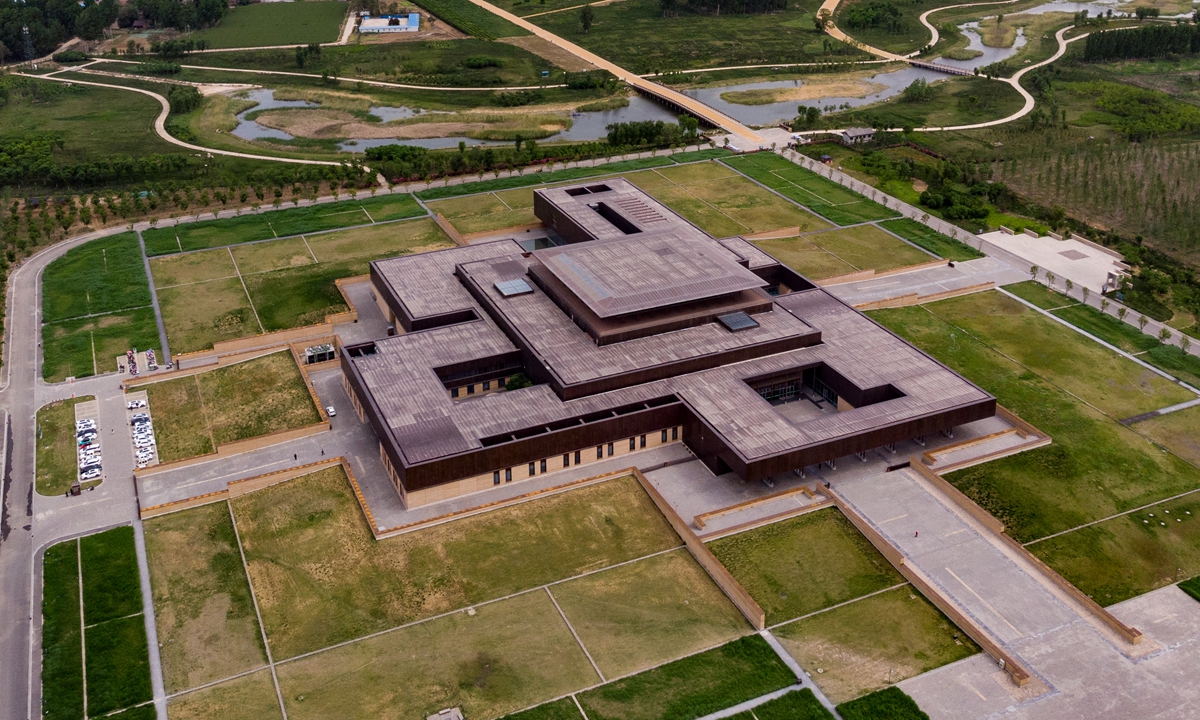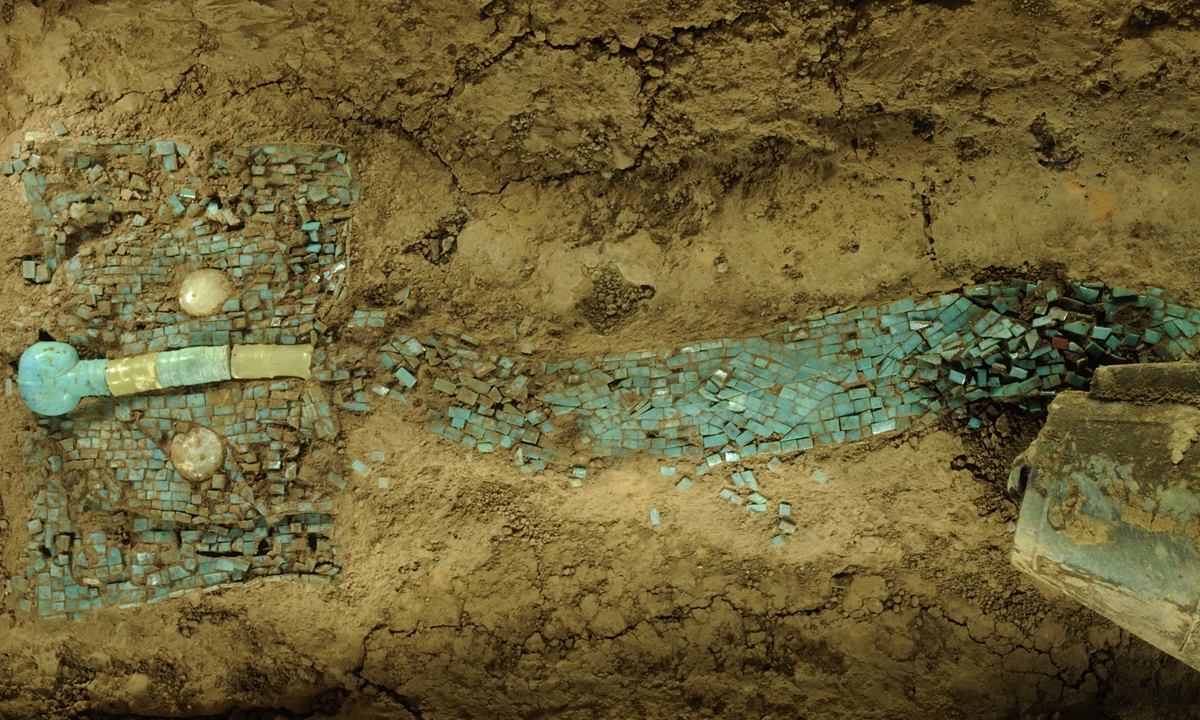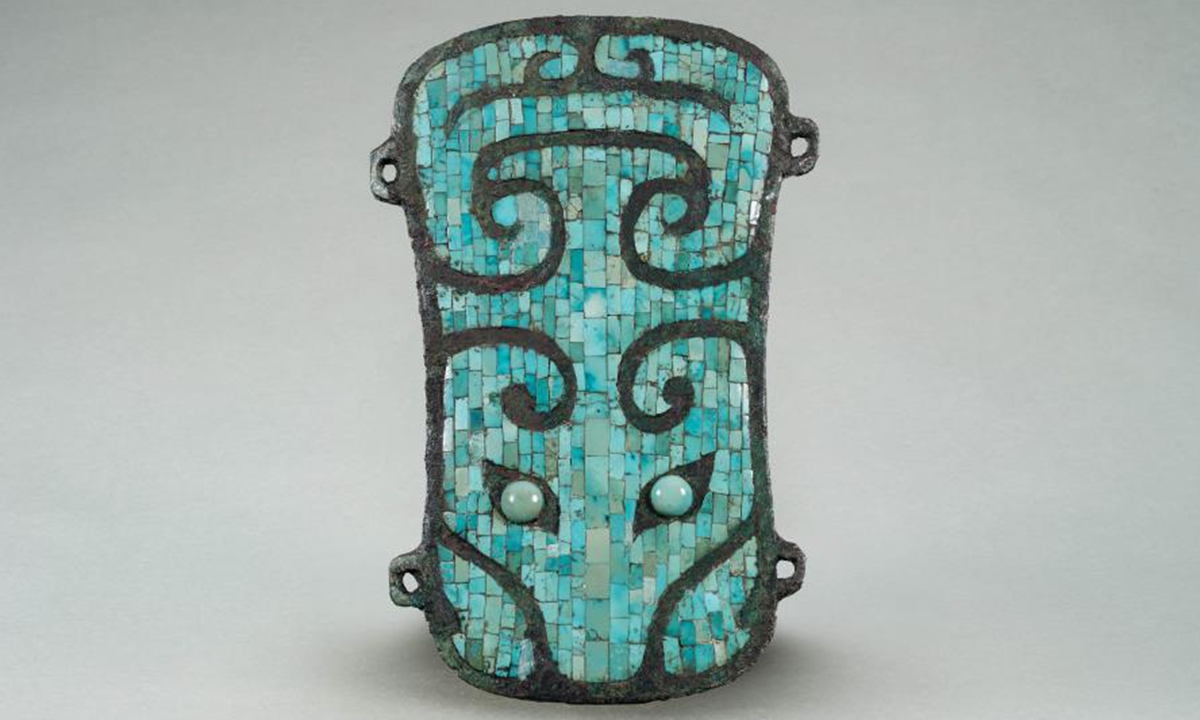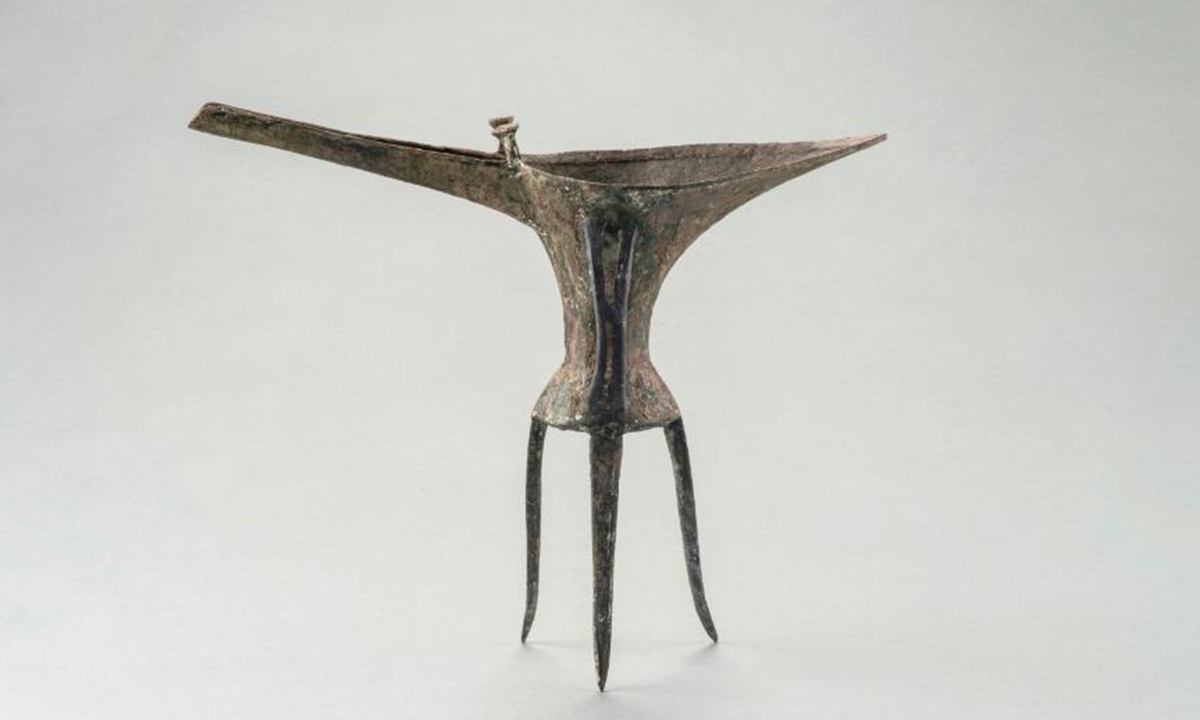
A view of the Erlitou Relic Museum Photo: Courtesy of the Erlitou Relic Museum
Editor's Note:
Through the continuous efforts of several generations of Chinese scholars, major research projects, such as the Project to Trace the Origins of Chinese Civilization, have shown that China's history includes 1 million years of human evolution, 10,000 years of culture and more than 5,000 years of civilization.
Thousands of museums across the country are like little stars lighting up the Milky Way that is China's more than 5,000-year-old civilization with their rich collections and exhibits.
In this series, the Global Times will introduce 10 museums from across the breadth and width of China, exploring their contributions to China's diverse, inclusive and continuous civilization. They are forming a map of China's more than 5,000 years of civilization with their precious cultural treasures, relics and research.The city of Luoyang in Central China's Henan Province is a huge modern metropolis. However, its prominent place in China is not a recent development. More than 3,800 years ago, the land was already rich with the culture of China's first recorded dynasty - the Xia Dynasty (c.2070-c.1600BC).
Relics from this time have been preserved till the present such as bronze wares, China's earliest urban road network and the remains of two-wheeled chariots.
Many of these remains from the budding stage of Chinese civilization are now part of the collections at the Erlitou Relic Museum in Luoyang.
Discovered in 1959 by historian Xu Xusheng, the Erlitou Ruins in Luoyang are about 3,500 to 3,800 years old, which places them in the time period of the late Xia or early Shang Dynasty (c.1600BC-1046BC).
The current predominant theory among Chinese archaeologists is that the site was a capital city during the middle to late Xia Dynasty.
Over the past few years, archaeologists have excavated more than 10,000 items from the 40,000-square-meter site.
The value of the Erlitou site lies in how it shows that the Chinese nation has always been a "land of etiquette," said Wang Wei, the chief expert of the national project to trace the origins of Chinese civilization and president of the Chinese Society of Archaeology.
Wang told the Global Times that the Erlitou site reveals that the Xia culture had a complete etiquette system and that it had been infused with cultural diversity.
Wang noted that if the Qin (221BC-206BC) and Han (206BC-AD220) dynasties were the peak of China's multi-ethnic cultural diversity, then the Xia period was the beginning.
"Therefore the site holds value for the program," Wang added.
Costing some 630 million yuan ($90.5 million) to build, the long anticipated Erlitou Relic Museum officially opened to the public on October 19, 2019, after two years of construction.
Looking down on the whole museum from the air, it looks like a key with traditional Chinese features, symbolizing that the Erlitou culture is the key to Chinese civilization.
The archaeological discoveries made at the Erlitou Ruins hold great significance for understanding early Chinese civilization since they were home to the earliest prototype of a Chinese palace, bronze workshops and an urban road network.
All these discoveries are on display at the museum through the presentation of text explanations, photos, replicas, videos and VR technology.
The museum staff picked three cultural relics to share with the Global Times that they see as representative of Xia civilization.
The stories of these three national treasures can draw us into the ancient dynasty, allowing us to appreciate the stunning wisdom of ancient China.

Turquoise-inlaid dragon-shaped bronze object Photo: Courtesy of the Erlitou Relic Museum
Turquoise-inlaid dragon-shaped bronze objectAccording to the museum, this object was used in important rituals. Unearthed at the Erlitou Ruins in 2002, the dragon-shaped object, which is 64.5 centimeters long, is exquisitely decorated with more than 2,000 pieces of turquoise, a very precious material at the time that was often worn as jewelry by the noble class.
The object was originally placed on the skeleton of the owner of the tomb. The pieces of turquoise may have been glued together by some organic material which decayed over time.
The object is notable because it is extremely rare to see such extravagant use of turquoise and delicate crafting skills in objects associated with the dragon totem in early China.

Turquoise-inlaid bronze plate with an animal mask pattern Photo: Courtesy of the Erlitou Relic Museum
Turquoise-inlaid bronze plate with an animal mask pattern This 16.5-centimeter-long object, also used in rituals, was unearthed in 1984 at the Erlitou Ruins. The front of the object is inlaid with hundreds of pieces of turquoise, forming a pattern resembling an animal face. Even though more than 3,000 years have passed since its creation, none of turquoise have become loose or have fallen off.
The object was found in a tomb on the chest of the deceased. Researchers speculate that it was originally tied in place and was supposed to be a tool for communicating with Heaven and the gods.

Bronze jue wine vessel decorated with nipples Photo: Courtesy of the Erlitou Relic Museum
Bronze jue wine vessel decorated with nipples This object discovered in 1975 is one of the earliest bronze wine vessels found in China. The tripod vessel's belly is decorated with nipples.
Standing 26.5 centimeters tall, the
jue was made using advanced and complex techniques, symbolizing that bronze production was very mature at this stage and also showing the Xia people's handicraft wisdom.







